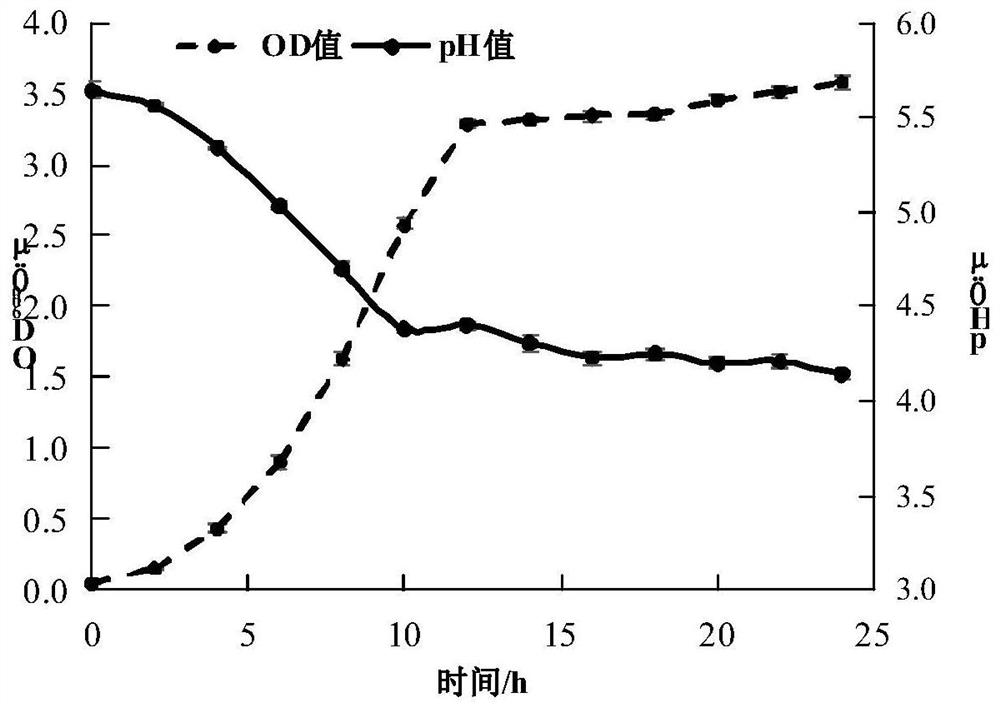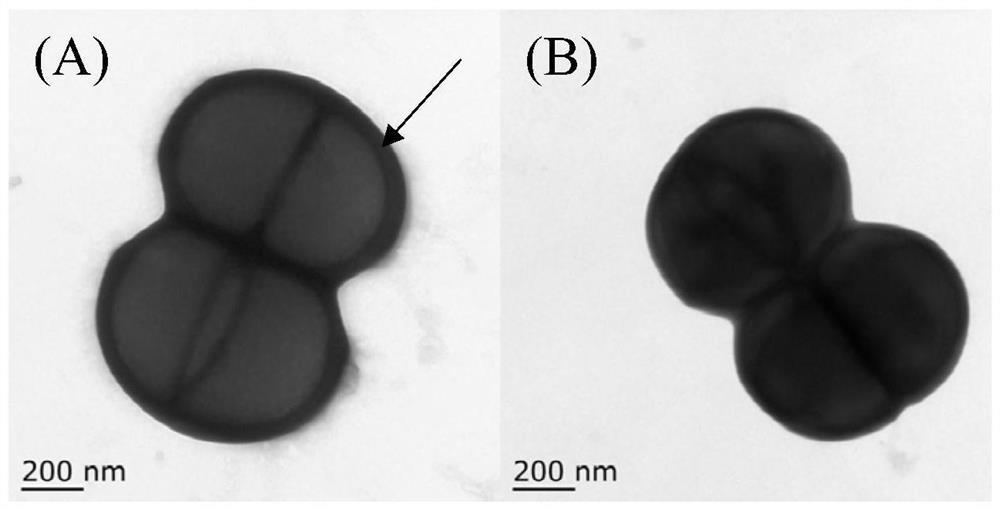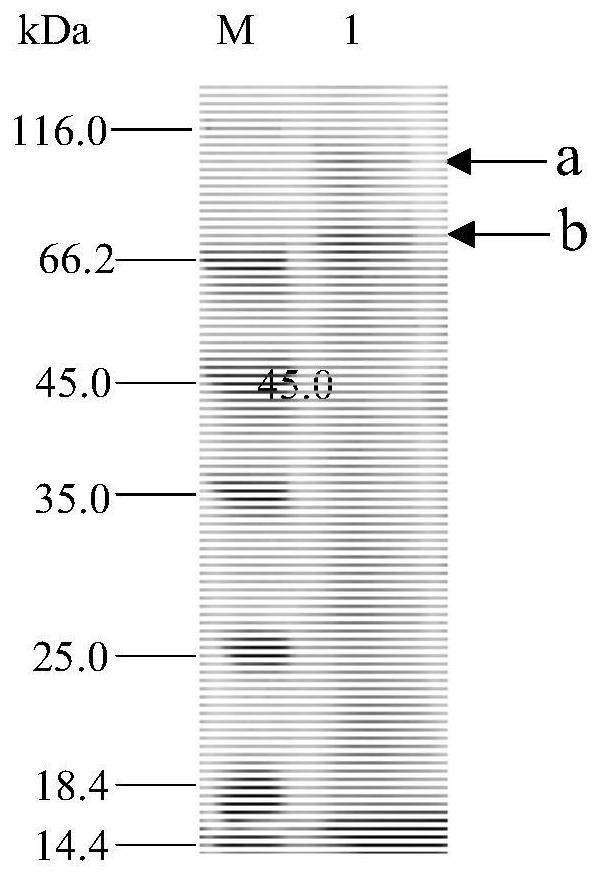Application of a Pediococcus pentosaceae surface protein in inhibiting food-borne pathogens
A food-borne pathogen, Pediococcus pentosaceae technology, applied in the fields of application, peptide/protein components, antibacterial drugs, etc., can solve the problems of few research reports on the surface protein of lactococcus, and achieve excellent antibacterial efficacy and low investment , enhance the inhibitory effect
- Summary
- Abstract
- Description
- Claims
- Application Information
AI Technical Summary
Problems solved by technology
Method used
Image
Examples
Embodiment 1
[0035] Embodiment 1: the growth situation and the acid production situation of Pediococcus pentosaceae
[0036] Inoculate -70°C glycerol stock solution in MRS medium with 2% inoculum size, incubate at 37°C for 24 hours, measure the OD every 2 hours 600nm Value and pH value and draw the growth and acid production capacity curve.
[0037] The result is as figure 1 As shown, with the increase of culture time, the growth rate of Pediococcus pentosacea gradually increased and began to enter the logarithmic growth phase at about 4 hours, and reached a stable period after 12 hours of culture, and the growth slowed down. However, in the adaptation period and logarithmic period of Pediococcus pentosaceae, the pH value of the medium has been decreasing, from 5.64 to 4.14, and tended to be stable at 12h. It still maintained stable growth under acidic conditions, indicating that Pediococcus pentosaceae has strong acid adaptability and can survive under low pH conditions.
Embodiment 2
[0038] Example 2: Extraction and analysis of surface protein of P. pentosaceus F28-8
[0039] (1) Extraction method of surface protein:
[0040]The strain was inoculated with MRS medium, cultured at 37°C for 18 hours, collected by centrifugation at 8000 rpm, washed twice with PBS and centrifuged. The bacteria in the control group were resuspended in PBS, and the bacteria in the treatment group were added with 5mol / L LiCl solution (10mL per gram of bacteria) at 37°C for 0.5h, centrifuged (8 000r / min, 15min), the supernatant was discarded, and 4mol / L L guanidine hydrochloride solution (5 mL per gram of bacteria) was resuspended and mixed evenly, treated in a constant temperature incubator at 37 °C for 1 h, centrifuged (8 000 r / min, 15 min), and the supernatant was collected. Transfer the supernatant into a dialysis bag with a molecular cut-off of 14kDa, dialyze in deionized water at 4°C for 48h, and centrifuge (12 000r / min, 15min) to take the supernatant, which is the surface p...
Embodiment 3
[0047] Embodiment 3: Antibacterial application of the surface protein of Pediococcus pentosaceus P.pentosaceus F28-8
[0048] Get the activated Staphylococcus aureus (or Salmonella) bacterial suspension and inoculate it into the LB liquid medium, the inoculum size is 2% (v / v), and the experimental group adds Pediococcus pentosaceae surface protein simultaneously (final concentration is 10 μ g / v). mL), while the control group was only inoculated with Staphylococcus aureus (or Salmonella), cultured on a shaker at 37°C for 10 hours, and measured OD every 2 hours 600nm value. Draw a growth curve graph. At the same incubation time, the absorbance value of the experimental group was recorded as A T , the absorbance value of the control group is recorded as A C , calculate the growth inhibition rate of Staphylococcus aureus (or Salmonella) according to the formula.
[0049]
[0050] Statistical analysis of data: SPSS 13.0 software was used for statistical analysis of data, and...
PUM
 Login to View More
Login to View More Abstract
Description
Claims
Application Information
 Login to View More
Login to View More - R&D
- Intellectual Property
- Life Sciences
- Materials
- Tech Scout
- Unparalleled Data Quality
- Higher Quality Content
- 60% Fewer Hallucinations
Browse by: Latest US Patents, China's latest patents, Technical Efficacy Thesaurus, Application Domain, Technology Topic, Popular Technical Reports.
© 2025 PatSnap. All rights reserved.Legal|Privacy policy|Modern Slavery Act Transparency Statement|Sitemap|About US| Contact US: help@patsnap.com



